Almost 1000 Previously Undiscovered Prehistoric Barrows Identified In The Netherlands
Conny Waters - AncientPages.com - Over 6,500 volunteers have supported accurately identifying approximately 1000 prehistoric burial mounds in the Netherlands in just four months, proving the value of involving volunteers in archaeology.
Volunteers and professional archaeologists taking core samples at a burial mound. Image credit: Quentin Bourgeois
In 2018, the Heritage Quest project was launched to harness the power of citizen scientists, utilising crowd-sourcing to identify archaeological features on lidar imagery of the central Netherlands.
Through the involvement of thousands of people online, prehistoric burial mounds were identified across the region in a short amount of time. However, the accuracy of crowd-sourced data has been questioned in the past, as the majority of volunteers are not professional archaeologists.
“While the volume of data exceeded our expectations, we faced a key challenge common to large citizen science projects: how reliable are the detections made by volunteers?” states lead author of the research, Dr Quentin Bourgeois from Leiden University.
To assess the accuracy of the data, the authors performed a ground-based survey of 380 sites identified during the study, examining them in person to determine whether they were in fact prehistoric barrows.
Four examples of lidar maps, highlighting locations volunteers identified as burial mounds and the number of times they were independently selected. Credit: Antiquity (2024). https://doi.org/10.15184/aqy.2024.127
According to Dr Bourgeois, the results are clear: “Citizen science works! We found a direct correlation between the number of volunteers identifying a potential archaeological object and its likelihood of being a prehistoric burial mound.”
This means that the Heritage Quest project has discovered 1,000 previously-unknown burial mounds, doubling the number of known mounds from the region in just four months.
Importantly, this shows the value of involving volunteers in archaeological projects, allowing for the identification of archaeological features much more quickly than could be achieved by professionals alone.
“What would have taken professional archaeologists years to accomplish was achieved in a matter of months thanks to the combination of lidar technology and citizen participation”, adds Dr Bourgeois.
It also has implications for heritage policy-making, as local governments can apply citizen science to quickly and cost-effectively identify heritage sites for protection. In the future, the authors plan to combine volunteer participation with machine learning, identifying archaeological sites on an even greater scale.
However, according to Dr Bourgeois, the most exciting part of the research was seeing how the involvement of the volunteers led to greater community engagement with archaeology, producing outspoken supporters for the region’s heritage.
"I’m blown away by how many previously unknown burial mounds the volunteers helped uncover”, concludes Dr Bourgeois. “I knew we were working in an important area with many traces of a prehistoric landscape still preserved, but I never expected to find so much so quickly! But for me the most amazing outcome is seeing the passion the volunteers had for our research! They have now become vocal advocates for the preserved traces of prehistoric landscapes in their region.”
Their results are published in the journal Antiquity.
Written by Conny Waters - AncientPages.com Staff Writer
More From Ancient Pages
-
 Evidence Ancient Civilizations Had Knowledge About Planets In Our Solar System Thousand Years Ago
Ancient Mysteries | Mar 10, 2021
Evidence Ancient Civilizations Had Knowledge About Planets In Our Solar System Thousand Years Ago
Ancient Mysteries | Mar 10, 2021 -
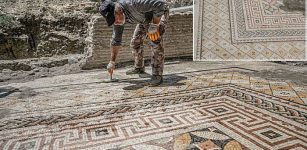 Yet Another Beautiful Roman Mosaic In Hatay, Turkey
Archaeology | Jul 14, 2022
Yet Another Beautiful Roman Mosaic In Hatay, Turkey
Archaeology | Jul 14, 2022 -
 New Study Questions Claims Homo Naledi Was Advanced
Evolution | Nov 13, 2023
New Study Questions Claims Homo Naledi Was Advanced
Evolution | Nov 13, 2023 -
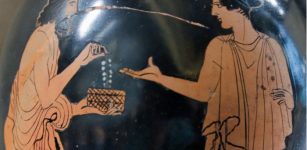 Necklace Of Harmony – Powerful Ill-Fated Piece Of Jewelry With Curse
Featured Stories | Jul 3, 2021
Necklace Of Harmony – Powerful Ill-Fated Piece Of Jewelry With Curse
Featured Stories | Jul 3, 2021 -
 Huge Viking Burial Discovered Beneath Streets Of Dublin
Archaeology | Aug 6, 2014
Huge Viking Burial Discovered Beneath Streets Of Dublin
Archaeology | Aug 6, 2014 -
 Baffling Cathar Mystery – Was It A Double Ancient Reincarnation Case?
Featured Stories | Jan 12, 2025
Baffling Cathar Mystery – Was It A Double Ancient Reincarnation Case?
Featured Stories | Jan 12, 2025 -
 Shieldmaiden Hervör’s Dangerous Quest For The Cursed Tyrfing Sword
Featured Stories | Oct 6, 2025
Shieldmaiden Hervör’s Dangerous Quest For The Cursed Tyrfing Sword
Featured Stories | Oct 6, 2025 -
 Ancient Secrets Of The Amazon Jungle – Dangerous Expeditions And Hidden Treasures – Part 1
Ancient Mysteries | Mar 1, 2019
Ancient Secrets Of The Amazon Jungle – Dangerous Expeditions And Hidden Treasures – Part 1
Ancient Mysteries | Mar 1, 2019 -
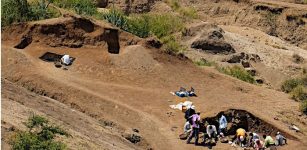 Investigation Of A 2.9-Million-Year-Old Site Reopens Case Of Who Made First Stone Tools
Archaeology | Feb 9, 2023
Investigation Of A 2.9-Million-Year-Old Site Reopens Case Of Who Made First Stone Tools
Archaeology | Feb 9, 2023 -
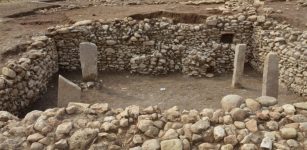 Temples At Boncuklu Tarla Are Older Than Göbekli Tepe And Re-Write Ancient History
Archaeology | Dec 10, 2019
Temples At Boncuklu Tarla Are Older Than Göbekli Tepe And Re-Write Ancient History
Archaeology | Dec 10, 2019 -
 Ostrich Egg Vessel And Thracian Horseman Fibula Found In Roman-Era Burial Mound In Bulgaria
Archaeology | May 5, 2020
Ostrich Egg Vessel And Thracian Horseman Fibula Found In Roman-Era Burial Mound In Bulgaria
Archaeology | May 5, 2020 -
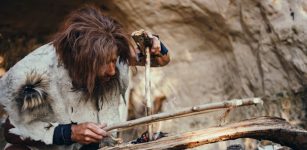 Call Modern Humans Homo Faber, The Toolmaker – Not Homo Sapiens – Scientist Says
Archaeology | May 16, 2022
Call Modern Humans Homo Faber, The Toolmaker – Not Homo Sapiens – Scientist Says
Archaeology | May 16, 2022 -
 Ancient Artifacts With Foreign Inscriptions And Unknown Signs Discovered In The American Southwest Reveal An Epic Story
Featured Stories | Jul 11, 2024
Ancient Artifacts With Foreign Inscriptions And Unknown Signs Discovered In The American Southwest Reveal An Epic Story
Featured Stories | Jul 11, 2024 -
 The Faery Grail Of Hospitality And Accord- The Forgotten Story – Part 1
Ancient Mysteries | Sep 25, 2019
The Faery Grail Of Hospitality And Accord- The Forgotten Story – Part 1
Ancient Mysteries | Sep 25, 2019 -
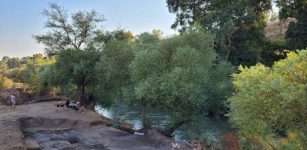 How Climate Change Contruibuted To The Transition From Nomadic Hunter-Gatherers To Settlement And Farming Societies
Archaeology | Nov 27, 2021
How Climate Change Contruibuted To The Transition From Nomadic Hunter-Gatherers To Settlement And Farming Societies
Archaeology | Nov 27, 2021 -
 Incredible Anatomical Human Machines – Two Fleshless Bodies Mystery
Featured Stories | Jul 24, 2018
Incredible Anatomical Human Machines – Two Fleshless Bodies Mystery
Featured Stories | Jul 24, 2018 -
 On This Day In History: Leon Trotsky Was Assassinated – On August 20, 1940
News | Aug 20, 2016
On This Day In History: Leon Trotsky Was Assassinated – On August 20, 1940
News | Aug 20, 2016 -
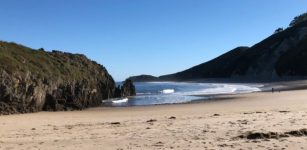 Prehistoric Humans Adapted To Intense Climate Change – New Study
Archaeology | Apr 22, 2022
Prehistoric Humans Adapted To Intense Climate Change – New Study
Archaeology | Apr 22, 2022 -
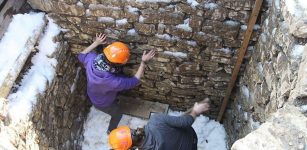 Did Ancient Romans Use Four-Meter Deep Shafts As Refrigerators During Summer?
Archaeology | Apr 6, 2018
Did Ancient Romans Use Four-Meter Deep Shafts As Refrigerators During Summer?
Archaeology | Apr 6, 2018 -
 Legendary Helike – Uncovering Lost City of Poseidon
Civilizations | Dec 19, 2018
Legendary Helike – Uncovering Lost City of Poseidon
Civilizations | Dec 19, 2018


